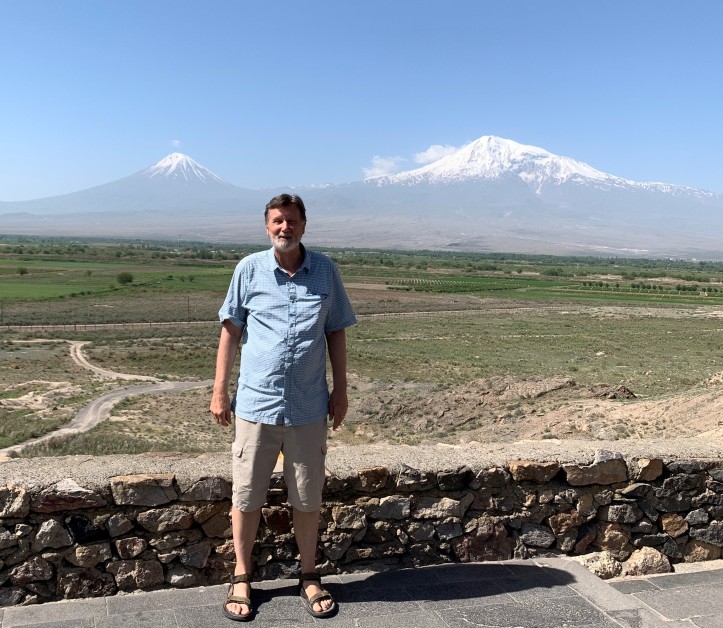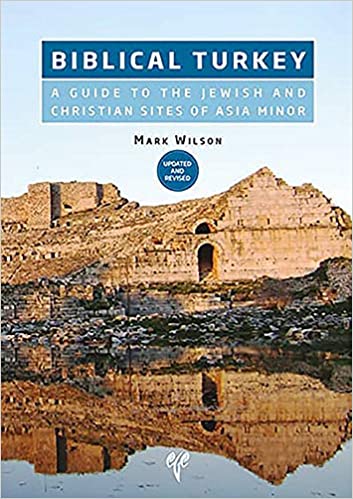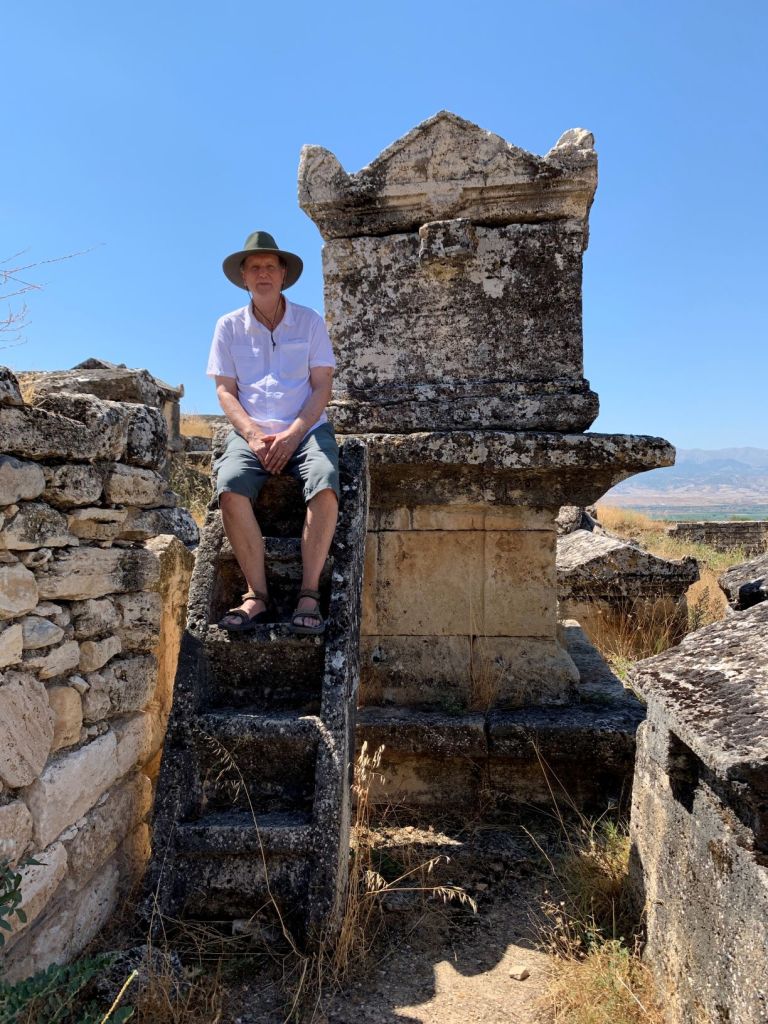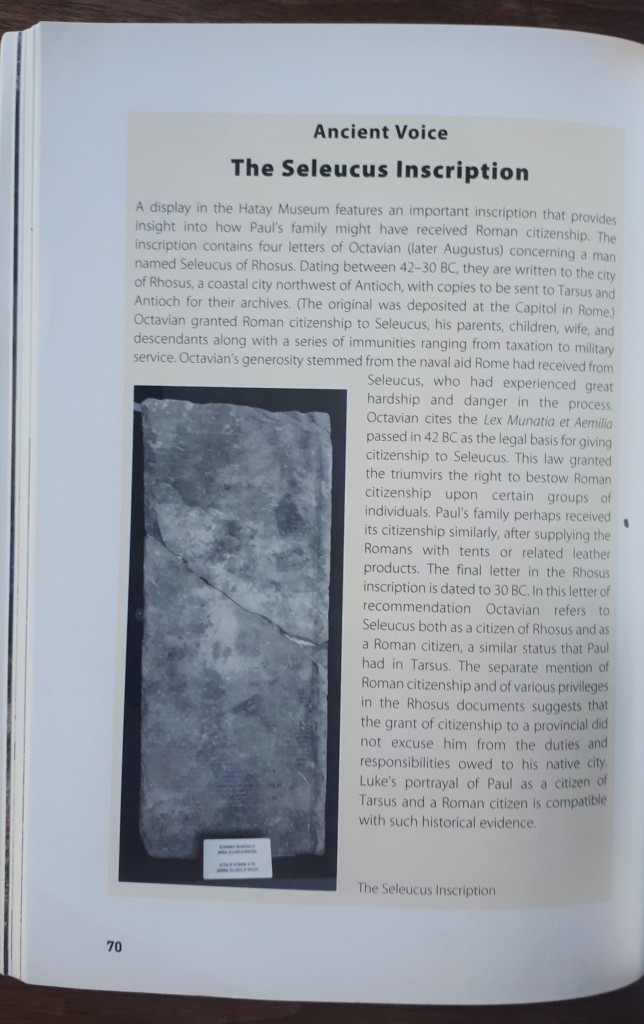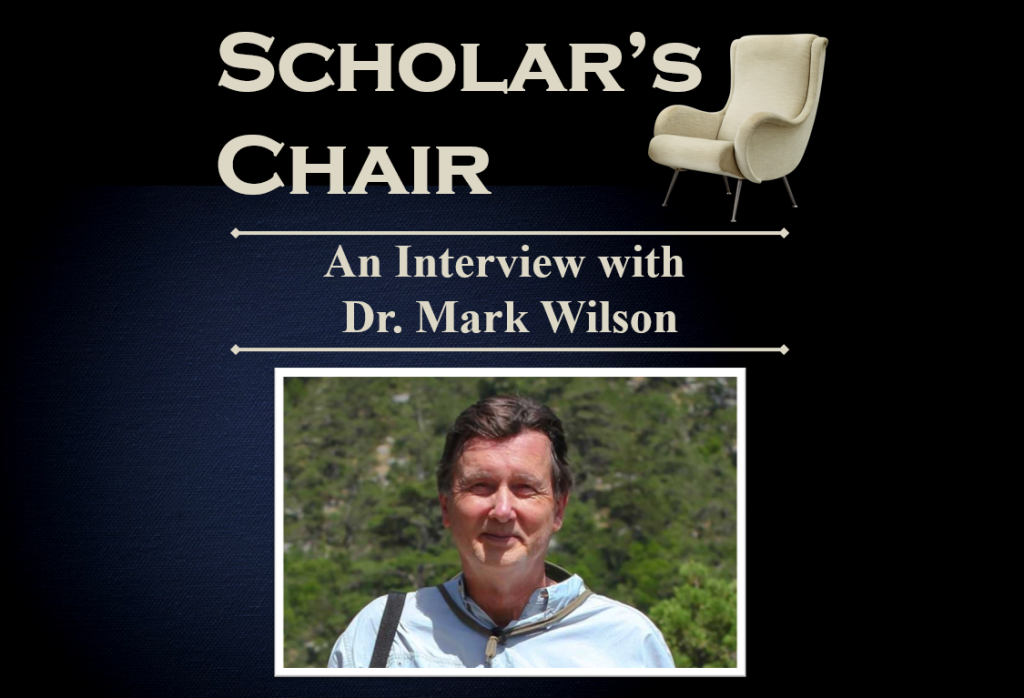
I was introduced to my next guest through his book, Biblical Turkey: A Guide to the Jewish and Christian Sites of Asia Minor, which was one of my textbooks for a course at Trinity Southwest University on the Archaeology of the New Testament Period (see my review of his book here). I was so impressed with Mark Wilson’s research on ancient Asia Minor that I reached out to see if he would be willing to sit in the virtual “Scholar’s Chair” for an interview. I’m excited that he graciously agreed.
Dr. Mark Wilson (D.Litt. et Phil., University of South Africa) has lived in Turkey since 2004. He is the founder and director of two organizations—the Seven Churches Network and the Asia Minor Research Center in Antalya. Their purpose is to promote the study of early Judaism and Christianity in Asia Minor within the context of the Greco-Roman world. He is the author and editor of over a dozen books including four studies on the book of Revelation. His articles can be found in the ESV Archaeology Bible and the Lexham Geographic Commentary Acts through Revelation. He and his wife Dindy have four adult children, four grandsons and four granddaughters.
BIBLE ARCHAEOLOGY REPORT: Welcome to the Bible Archaeology Report, Dr. Wilson. You’ve written an important book called, Biblical Turkey: A Guide to the Jewish and Christian Sites of Asia Minor . What sparked your interest in this area?
DR. MARK WILSON: In 1992 I visited the Seven Churches for the first time, also my first trip outside the United States. I was just beginning my doctoral thesis in the book of Revelation, so being at these archaeological sites was transformational for me. The geography and history of these places, which I had only read about, really came alive for me. I led my first tour to Turkey in 1994 and saw how people’s lives were affected by walking on these sites related to our faith. My own interest grew with regular visits to Turkey until 2001 when my wife and I spent four months traveling here. In 2004 we moved to Izmir, ancient Smyrna. As my knowledge of the biblical sites in Turkey grew, my information to share with visitors did as well. The guidebooks on Turkey’s biblical sites at the time were dated and incomplete, so I was encouraged to collect my notes and put them into book form. I determined to publish the book in Turkey so it would be available for sale here plus have a cheaper cost and more flexibility to change and update the content. New archaeological discoveries require regular updating of the book’s content at each print run. This decision in 2010 to publish with Ege Publishers, Turkey’s premier archaeological press, has proven a good one. Biblical Turkey is in its fourth printing with a revised and updated edition released in 2020. Nearly all of the photographs were taken by me through my years of travel. As photographers know, catching a particular photo is often just fortuitous. One afternoon I was at Miletus with a student group (I’m normally there in the morning), and flooding had caused the water table to rise right up to the theater, just as the Gulf of Latmus did in antiquity. I managed to capture that photo, which is the cover for the book. I am particularly gratified to hear from students and pastors who are using its content for their classes as well as teaching and sermons.
BIBLE ARCHAEOLOGY REPORT: You’ve lived in Turkey and traveled extensively in the footsteps of the Apostle Paul. Which Pauline site is your favorite to visit and why?
DR. MARK WILSON: That’s a tough question–like asking which of your children you love the most. I have a top 10 list, which is the best I can do. I have favorite sites related to John and Peter too, but I’ll leave those out and focus only on Pauline sites. While Greco-Roman cities feature many of the same structures, the level of preservation varies among those in Turkey. So particular sites offer certain exceptional features. So here are the cities in no particular order: Assos–Roman road to the harbor; Ephesus–everything especially the commercial agora and theater; Pisidian Antioch–imperial cult temple; Hierapolis–necropolis and theater; Miletus–sacred way to Didyma; Patara–lighthouse; Myra–harbor at Andriake; Perga–Hellenistic gate; Seleucia–Vespasian/Titus tunnel; Antioch on the Orontes–mosaic museum and mosaic hotel. That’s 10 so I’ll stop. I’ve lived in Antalya for ten years, which is biblical Attalia. I regularly do my power walking through the old city Kaleiçi and down past the harbor from which Paul and Barnabas departed at the conclusion of their first journey. So memory of the apostle still lingers around here.
BIBLE ARCHAEOLOGY REPORT: Which archaeological artifact in Turkey related to the Apostle Paul do you believe is the most significant?
DR. MARK WILSON: You might find my answer surprising, but it is not the Sergius Paullus inscription at Pisidian Antioch, however important that artifact is. Out of many, I will choose two, neither on your list of top ten discoveries related to Paul, although the milestone relates to Roman roads. This milestone remains in situ north of Antalya in a pass used by the Roman road called the Via Sebaste. It marks 139 Roman miles from Pisidian Antioch, the caput viae, or head of the road. It suggests conclusively to me that this is the road Paul and Barnabas used to travel inland from Pamphylia to Phrygia, which differs from the route found in almost every Bible atlas.
The second is an inscription concerning Seleucus of Rhosus now at the Hatay Archaeology Museum in Antakya. It is significant because it illustrates how a resident of Syria and Cilicia received Roman citizenship from Augustus in the decades just before Paul’s birth. It provides a plausible parallel regarding how Paul’s family in Tarus might have received citizenship, so that Paul could be born a Roman citizen. Copies of this stele granting citizenship to Seleucus and his family were to be erected in Antioch and Tarsus, no doubt to encourage others to consider generosity to Roman leaders with the possibility of citizenship.
BIBLE ARCHAEOLOGY REPORT: How can a knowledge of the geography and archaeology of Turkey help us better understand Scripture?
DR. MARK WILSON: Regarding geography, here’s an example. When Paul and Barnabas landed in Asia Minor on the first journey, they were in the region called Pamphylia. They traveled northward across the Taurus Mountains through the region called Pisidia before arriving in Phrygia and its two major cities, Pisidian Antioch and Iconium. A common error is to call the former, Antioch in Pisidia. Strabo actually calls it: Antioch towards (pros) Pisidia, that is, the Antioch near the Pisidian border. There were sixteen Antiochs in the ancient world, so geographical names were used to distinguish them. If you understand Antioch to be in Pisidia, the references to Paul revisiting these Phrygian cities in Acts 16:6 and 18:23 would be lost.
Regarding archaeology, archaeologists in Perga discovered two Latin inscriptions while excavating an insula at the beginning of the Via Sebaste. Both date from the middle of the first century AD, the time Paul was traveling in the region. Until recently it was believed by ancient historians and classical scholars that Claudius had made Lycia and Pamphylia a double province in AD 43. These inscriptions plus others recently discovered now tell us that Pamphylia was actually part of Galatia. So when the apostles landed at Magydus, the port of Perga in Pamphylia, they were already in the Roman province of Galatia. They thus traveled in Galatia their entire journey. If a church was started in Perga and possibly in Attalia too, these were the true south Galatian churches. Pisidian Antioch, Iconium, Lystra, and Derbe were actually situated in middle Galatia. So our nomenclature needs to change. Plus the believers in Perga and Attalia might have been part of the audience for Paul’s letter to the Galatians.

BIBLE ARCHAEOLOGY REPORT: Critics sometimes question the accuracy of Luke. Based on your research, how historically accurate do you believe the travels of Paul are described in the book of Acts?
DR. MARK WILSON: When I present papers on Acts at conferences, I sometimes get questioned on this issue of historicity. My approach has been to take the text of Acts as is and see if geographical and historical sense can be made of it. As someone who lives where these journeys happened and who has traveled along these land and sea routes multiple times (above too on airplanes), Luke’s accounts are practicable. Some, not all, scholars are content to write from their offices without traveling to sites or engaging with their realia However, without engaging the material culture on the ground, articles and commentaries remain merely text-based, thus present an incomplete perspective. One of my joys is to take scholars and pastors to retrace the journeys of Paul, not only in Turkey but in Israel, Cyprus, Greece, Italy, Malta, even Spain. The more we know about Paul’s geographical and historical world, the better interpreters we will be of his letters along with the book of Acts.
I want to thank Dr. Wilson for taking the time to share his expertise with us regarding ancient Asia Minor. You can purchase his book, Biblical Turkey: A Guide to the Jewish and Christian Sites of Asia Minor at Amazon.com, or better yet, support your local Christian bookstore and order it through them.
Here are some other articles by Dr. Mark Wilson from his academia.edu page:
- Eutychus in Troas: The Architecture and Archaeology of his Fall
- Saint Paul in Pamphylia: Intention, Arrival, Departure
- Smyrna: The Open Door to the Archaeological Rediscovery of the Seven Churches
Cover Photo: SevenChurches.org
Disclaimer: I allow each scholar to answer in his or her own words and may or may not agree with his or her interpretation of their work.

